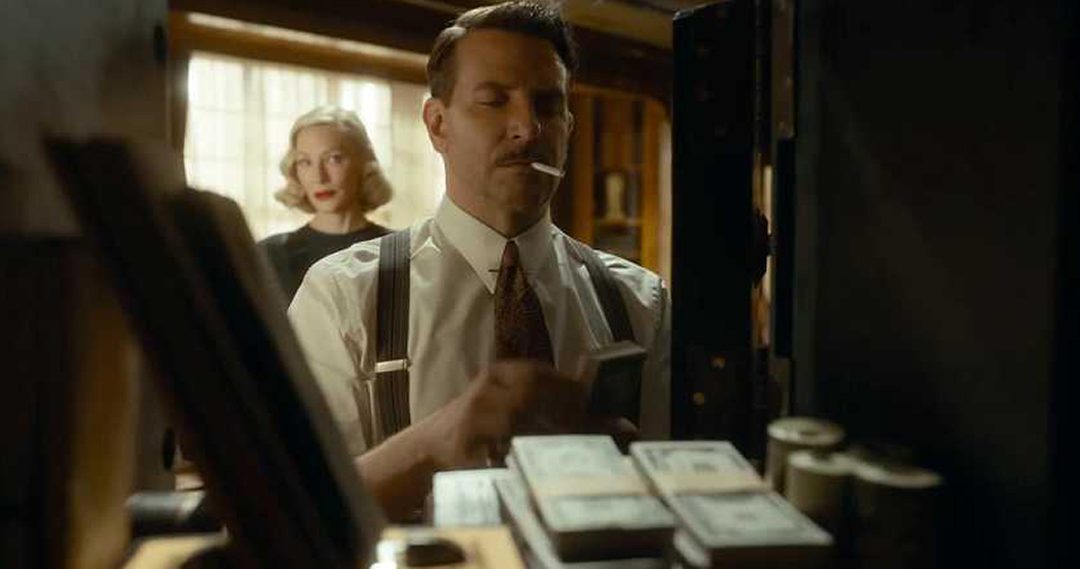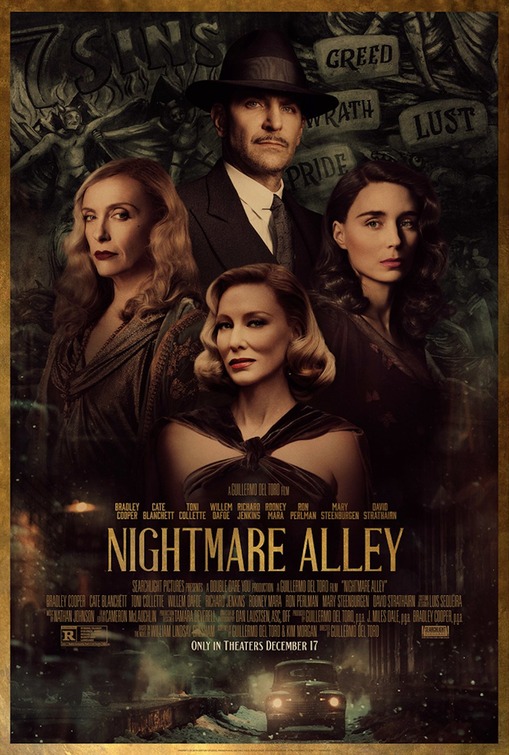“For the Love of Money” is also new to Blu-Ray this week.

Nightmare Alley
Guillermo del Toro is a great director. This is not only because he’s had an amazing career churning out mostly good movies filled with imagination and style. It’s also because he knows how to handle the Achilles heel of other talented directors: the exposition scene. These are the scenes in which not a lot of action happens and all we get is characters sitting around, talking about what’s going on, and setting up the plot for the rest of the movie.
There’s one of these scenes in “Nightmare Alley” that is so remarkably well-directed it’s quite possibly the most balletic example of scene blocking in modern cinema. The scene involves our protagonist Stanton Carlisle (Bradley Cooper), a scam artist who puts on a ”mentalist” show for high-paying audiences, talking to the icy blonde-haired psychologist (Cate Blanchett) who will feed him secrets so he can pretend to have the powers of divination. The setting is her amply spaced office and they do a lot of talking. This scene very easily could have been done with them seated across from each other at her desk. However, del Toro is too good for such mundanity. The actors walk all around the office, exploring the space. They’re given bits of business to do, like lighting a cigarette. Marks are hit by the actors at just the right moments. The camera pans, changes focus, and glides with precision timing. I was in awe watching it unfold. One of the most famously dissected and studied scenes for the art of scene blocking is the meeting between Scotty (James Stewart) and Gavin Elster (Tom Helmore) in Alfred Hitchcock’s “Vertigo.” This scene from del Toro deserves that level of study and respect in film schools for decades to come.
But as del Toro’s last movie “The Shape of Water” taught us, all that talent means nothing if the story isn’t there. Yeah, Best Picture winner or not, I do not like that movie. I will however concede that del Toro directed it well.
Thankfully, the story is most definitely there in “Nightmare Alley,” based on a novel by William Lindsay Gresham that was adapted once before in 1947 into a movie of the same name starring Tyrone Power as Carlisle and Helen Walker as the psychologist, Dr. Lilith Ritter. According to a poster on imdb.com, the French title is “le Charlatan.” This title is a bit on the nose, but it does get to the core of a character. Carlisle is a lost soul looking for refuge. He first finds it at a carnival, where he learns the mentalist act from an older performer named Pete (David Strathairn). He then leaves with love interest Molly (Rooney Mara) and turns his small-time act into a profitable, superficially respectable hustle in the big city. Then he meets Dr. Ritter, and as anyone who’s seen a noir thriller will tell you, icy blondes are bad news in these stories.
Putting aside the noir elements, I regard “Nightmare Alley” as a tragedy. Stanton Carlisle has very humble and extremely shady beginnings, but he works at his craft and makes something of himself. Too bad for him that he has a combination of two destructive character traits: he doesn’t take good advice when it comes to him—and from multiple sources; and even more detrimental, he’s his own worst enemy. That’s a recipe for disaster, and all we can do is helplessly watch it play out to its inevitable conclusion. Buy it.
“For the Love of Money,” about a single mother who is pushed to her limit and returns to the only world she knows, a world she’s spent a lifetime running from, to protect her daughter, starring Katt Williams, Keri Hilson, Rotimi, and D.C. Young Fly.
Andrew Hudak is a lifelong film lover and author of the novel “Takedown,” which is available on Amazon, iTunes, and more. His column on Blu-Ray new releases appears every Tuesday. He lives in Connecticut.


